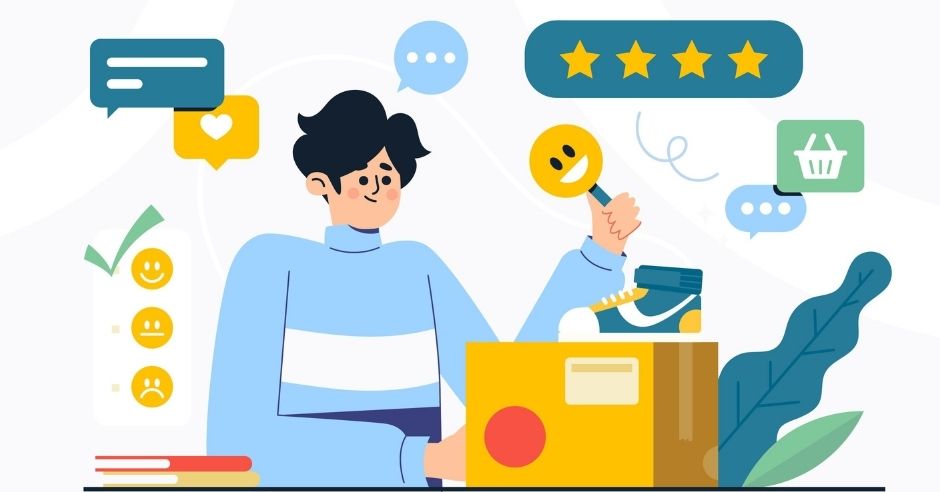Fresh research recently floated on The Harvard Business Review revealed a startling fact. The act of merely asking customers for feedback isn’t enough to prevent customer attrition and seeking more out of you.
There are several theories on consumer psychology that direct us to the fact that something as simple as CSAT or consumer satisfaction survey helps in appeasing your customer’s desires, getting them to reinforce the positive feelings they may already possess for your product, giving your better chance of them buying from you again. Latest in this fad is customer feedback software that gives you a clear insight into what your product actually means to your customers. These apps can accurately identify the happiness index of the customers and help you improve your business performance.
The very procedure of asking opinions or seeking viewpoints induces people or customers to form opinions that wouldn’t have otherwise come into their heads. Chances are your customers may not consciously realize the fact that they love a certain feature if you haven’t looked for feedback on it.
Businesses looking for long-term growth understand customer feedback to be one of the key drivers for long-term growth. All the businesses of today lap up every opportunity to strike a conversation with their customers or know more about them. Corporations are seen spending millions of dollars to set up customer feedback apps – where they run campaigns like email marketing, reviews, website analytics, digital analytics, and surveys.
Though we have mentioned a number of times what customer feedback is, let us once again iterate the meaning and significance of customer feedback and the need for applications to create one:
When customers provide information about the experience they had with your product or service, we call it customer feedback. There are manifold benefits of it – a collection of customer feedback may come of use in helping product improvement, customer support, and the marketing teams to understand which areas have room for betterment. There are several methods of collecting feedback – a proactive method of polling and interviewing them or surveying them or simply asking for reviews.
The nagging question is- how should you utilize these modes to learn from the feedback? The reason why more and more emphasis is provided on customer feedback apps is for any business to understand whether they have the right mode of collecting feedback. Before any business establishes the viability of the channel they use, it is highly crucial that the business develops a vivid image of why the feedback is getting collected. After all, the happiness factor of your customer is the first point of concern for all businesses.
Why collect customer feedback?
Do you look for first-hand guidance on how to improve your product? Are you creating a new feature where you need user inputs? Are you getting many complaints? Once you clearly know what your end goal is, move ahead to the practical mode: how would you collect the feedback?
We have been telling you about the customer feedback applications. However, you need to understand there is no one-size-fits-all trick here that can tell you how you should gain information from the end-users. For instance, when you send a survey to an already irate customer, you are only about to make matters worse. It’s better you called on the phone and asked for their feedback.
Let us now find out what are the best methods to collect feedback:
Out of at least a hundred survey tools that give you the window to collect opinions of your customers, we have put some of the highly popular ways to collect customer opinions.
Form-based surveys
This is the most common method of collecting feedback by using survey forms that contains a questionnaire usually sent via email. The one particular thing that you always need to remind yourself is not to get carried away and seek too many answers. It is not a linear progression the correlation between how many questions you ask and the amount of time the customer takes to respond. The usual trend is the more questions the less time your customer would spend on each question. Hence, the best way to get the best response out of your end users is by asking only the core questions.
It would be difficult to exactly identify the ideal strength for any survey. The usual best number opined by some experts is between 5 and 10. The best thumb role to remind yourself is – ask only those questions that complement your end goal. Make sure to keep questions that serve a clear goal.
The best way is to ask open-ended questions. When you seek multiple-choice questions, the responses are based on your assumptions. Open-ended questions leave you with a customer’s clear opinion of your product or newly added feature.
When should you use form-based surveys for customer feedback?
The best time and place to use the form-based survey is while seeking detailed inputs. Send this kind of form to the only core and engaged users, who would always take out the time to give you the feedback.
In-app surveys that are short
Customers are always thinking of means through which your product will be beneficial for them. What you provided may not be the best of what they are looking at. It is least unlikely that they reach out to you in the beginning; rather they would call you or seek your help only at the last stage or when there is a big issue.
A really good idea is to offer surveys with your app or software. Once your customer has completed a specific feature in your app, you could prompt a survey immediately. Since your customer is already using the customer feedback app, there is a high likelihood of the feedback being precise and not ambiguous.
Remember not to use this app for all surveys, instead use this only if you need some quick feedback. The core thing is keeping a tab on the time and triggers your survey the very instance your customer’s transaction ends. The questions asked have to be user-specific and not any random question on the product.
Customer calls
It’s always mentioned in the books of customer satisfaction that the best way to understand your customer is to talk to them. There will be tons of data you would have collected from surveys, yet the best feedback is when you call your customer directly. Moreover, when you hear the person’s voice, you can best identify what the person is feeling about the product.
When you should use the phone call for customer feedback
Understanding your customer requirements by talking to them isn’t a structured framework as survey-form entries. Entering feedback acquired from a call means a lot of hard work. The key is to focus only on the customers who are avid users and will give you the best feedback for your better product service creation. Call only your avid customers and the core ones so that you can understand what your real areas of functional improvement are. This will give you actionable feedback.
Transactional emails
When you have signed up for a product or service, there is an immediate follow-up email from the business house. It is called transactional email. These emails are actually triggered by some interaction between the user and the customer feedback software you use. Most of the time, transactional emails are treated as a simple necessary notice where companies wouldn’t put much effort to create a dialogue with their customer. There is a seriously lacking aesthetics in these emails and deliver inconsistent customer experience.
Corporate houses can use transactional emails as a powerful tool to create a dialogue between themselves and their customers. Asking for the right kind of feedback via these emails will surely get you a good response.
When should you use transactional emails to receive customer feedback?
When your user does certain key functions: signs up, upgrades to a plan or exits one, a quick one-liner transactional email either with one-line questions or short MCQs could help you gather the best customer feedback. Keep your email short and precise at it helps you to not irate your customers and burdening them with a long read.
Customer feedback – what to do with what you have collected?
Each day many companies are asking for customer feedback. There are, in fact, many customer feedback software and usage types that have not been mentioned here. With a humongous amount of feedback collected, only a few are translated into meaningful insights. If you could handle your feedback software well, the dialogue you conduct between you and your end-user could become the greatest drive making your business grow. The only significant way of rewarding your consultative and verbose customers is rolling with the punches to bring back the real changes they seek.








